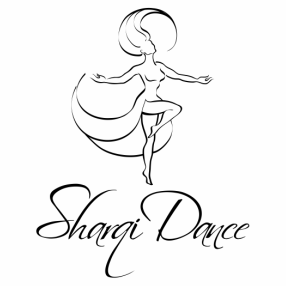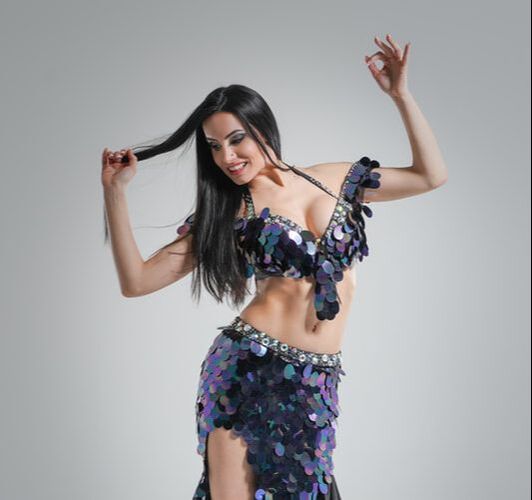|
Today our guest writer and Sha3bi Queen, Aasiyah, dancer and owner of Sehraya Entertainment tells us about this popular genre of Egyptian music, its most famous and influential artists and what to consider when performing to it Sha3bi: More Than Just "Popular" Let us discuss something that is very popular in the belly dancing world. It is all over Instagram and YouTube. Everyone dances to it. The music is one of my absolute favorites and I annoy my husband almost daily by playing it ad nauseam. I am talking, of course, about shaabi. More often than not, when many teachers (western and non-western alike) are asked to explain shaabi, they simply say that shaabi is music that is popular at a certain point in time or that it is pop music. This explanation is oversimplified and misleading. The word shaabi (شعبي, or sha3bi if read phonetically) translates to “my people” but in the context of musical genres, sha3bi would best be translated as ‘folky’ or ‘popular’. And it should come as no surprise that sha3bi music is housed under the umbrella of pop music. Adaweya, King of Sha3bi
Watch Adaweya in Action In this vintage video (1970's?), Ahmed Adaweya sings his popular song Zahma Beyond Ahmed Adaweya Long before Adaweya, neighborhoods used to have their local sha3bi guy entertain at parties and street weddings, and singers like Mohamed Roushdy, Mohamed Abd el Motileb, and Mohamed al 3ezaby were recording sha3bi music long before Adaweya. Nevertheless, Adaweya was a revolutionary in the genre, and is the king of the modern sha3bi we love today. While sha3bi music is of course popular, pop music and sha3bi are not the same. Amr Diab is a pop singer, but he never sings sha3bi. Hakim IS a sha3bi singer who is also sometimes a pop singer. Emad Ba3ror is only a sha3bi singer. Music style and composition as well as use of language and voice are what distinguish a sha3bi singer from a pop singer.
Sha3bi Music Today Recently, like all art, sha3bi music has gone through quite a revolution since the glory days of Adaweya. Current sha3bi has been marked by songs like Sigara Bunni (Brown Cigarette) by Mahmoud al Husseni, arguably one of the most iconic sha3bi songs of the past two decades. Most sha3bi singers now utilize a synthesizer or electronic band over a full band or orchestra (Hakim is a major exception, his band is huge and fantastic!) and many singers are incorporating rap and/or other western style music into their production. Sha3bi music can cover many things--love, politics, life, marriage, fruit, etc--and can also be full of double entendre. Sha3bi singers often talk about controversial and taboo topics such as drugs and sex, as is common for example for popular hip hop artists here in the US. Singers like Ahmed Sheba, Abd el Basset Hamouda, and Shaabola are known for their heavy and politically laced songs while Mahmoud el Lithy, Bosy, and Saad el Soghayar generally keep things light and fun. Some of my favorite sha3bi singers are Ahmed Sheba, Emad Ba3roor, Abd el Basset Hamouda, and Reda el Bahrawy. I also really recommend checking out a truly fantastic sha3bi keyboardist, Abd el Salam. Watch this video translation of Sigara Bunni: but ONLY if you're 18 or older ;) and ready for a laugh Dancing to Sha3bi Music As a dancer, it is important to remember that sha3bi is a form of lyricism and music; it is not a dance style. When performing to sha3bi music, the dance form appropriate to use is raqs baladi (baladi dance). Raqs baladi is very similar to raqs sharqi (Oriental dance, more commonly known as "belly dance") in movement, but differs in the delivery and intent. Most sha3bi tells a story of some kind and it always adds an extra element to a performance when the dancer can add to that story. Many dancers, myself included, prefer to wear a dress or galabeya when performing to a sha3bi piece; however, it is fine to wear a bedlah or cabaret costume when incorporating a sha3bi piece into a full set. Movement is earthy, raw, and sometimes lazy. It is important to know the song lyrics not only to avoid potential embarrassment, but to be able to communicate the story in the song. At its heart, sha3bi music is expressive and fun. Even when the singer is lamenting about the rage of poverty and inequality in the world, everyone loves sha3bi! About Today's Author Aasiyah is a professional Raqs Sharqi performer, instructor, and artistic company director who specializes in modern Egyptian technique. Known for fusing masculine and feminine performance elements, her authentic style has been developed from years of dedicated study of Egyptian dance, culture, and language. While appreciative of the classic styles of the past, Aasiyah is constantly pushing to stay relevant of modern Cairo life and the influences it has on the dance. You can find out more about Aasiyah and follow her work by visiting her website, https://www.aasiyahdance.com/ or her instagram pages, @Aasiyah_Dance and @Sehraya_Entertainment. Was This Post Helpful?Did you learn something from this post? Would you like to learn more about sha3bi? Hit "like" below and leave a comment with your feedback!
If you liked this article, you can visit our blog map to find other posts about Arabic music, belly dance and other related topics. Or subscribe to our newsletter, YouTube channel, Facebook and Instagram pages to be the first to see more content from us! Happy learning, and happy dancing!
0 Comments
Leave a Reply. |
AuthorYamê is a Brazilian-American View Posts By CategoryIf you'd like to read more articles by Yamê or SharqiDance's guest authors, please view our blog map here.
Archives
January 2024
|



 RSS Feed
RSS Feed